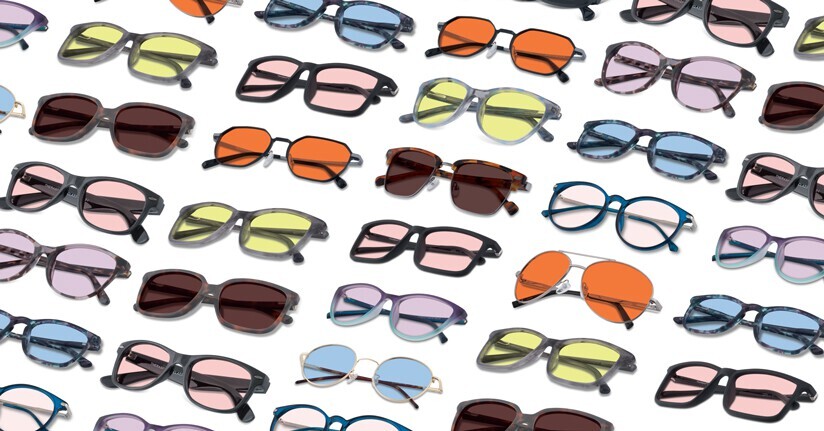How Well Do You Know Your Migraine Triggers?
If you live with migraine, you likely have some ideas about what triggers many of your attacks, and you may even avoid certain foods or activities in an attempt to hold off a potential migraine. New research from Curelator Headache shows, however, that we may not be as good at identifying our migraine triggers as we think.
The data, which was presented at the American Headache Society annual meeting in June, revealed that people with the prominent headache disorder had at least three suspected triggers—and some had as many as forty four. In addition, it showed that 60% of a patient’s self-reported triggers did not have any definitive connection to his or her migraine attacks. This clearly delineates that people with migraine commonly misidentify or lack awareness of the factors that lead to attacks, which has been supported by other research as well.(1)
These findings are significant because it may lead individuals to steer clear of things that they enjoy—such as wine or outdoor activities, to name a few—believing them to negatively influence their health. Furthermore, avoidance behaviors may actually decrease an individual's quality of life. Countless studies(2)(3) have reaffirmed that fear of forthcoming attacks as well as avoiding activities that may bring about an attack can lead to additional complications; these may include higher levels of anxiety and depression, overuse of acute or preventative medication, and increased likelihood of work-related disability.

Why it can be difficult to identify migraine triggers
There are still many unknowns about migraine
The root cause of migraine is unknown, and the symptoms, intensity, frequency, and warning signs of migraine attacks vary from person to person. This can make it very difficult—even with meticulous research and documentation—to pinpoint those factors that actually play a role in any given migraine attack. For example, chocolate as a trigger and other foods have been hotly debated, but their influence is much more complicated than a simple yes or no. Additionally, lack of adequate care, misdiagnosis of the condition, and varying effectiveness of treatments can further muddy a patient’s identification of specific triggers.
Patients must often self report triggers
Many people with migraine self report the factors they believe precipitated an attack. As a result, they can be susceptible to both outside influence and internal bias. Reading or hearing opinions about what triggers a migraine attack on the internet, television, from friends, family or even other patients, may cause individuals to subconsciously give those opinions more weight and apply them to their own situations.
Attacks may affect trigger analysis
Migraine attacks can be excruciatingly painful for some and may even be accompanied by a sense of confusion, disorientation, or brain fog at any stage of the episode. These factors may impact an individual’s ability to recall the activities and behaviors with complete detail.
Association can be misrepresented as cause
Potential triggers can also be co-occurring. If a person experiences a migraine attack after drinking a glass of red wine while sitting under fluorescent lighting, which is the actual trigger? Similarly, prodrome or pre attack warning signs—such as light sensitivity or sleep disturbances— can be misrepresented as triggers. Instead, they may be biological indicators that an attack is forthcoming. The truth is there are many factors that can contribute to migraine (often at the same time), making it easy to confuse correlation with causation.

How to better determine migraine triggers
1. Keeping a migraine diary is one of the most effective ways to accurately identify individual triggers. In a recent study(4), 87% of migraine patients who kept a diary for at least 90 days were able to develop a trigger profile, thus showing how integral they can be as part of the migraine treatment process.
Migraine diaries can be physical or digital; the most important factor in keeping a diary is consistency, so choose whichever medium you think you will be most likely to update regularly. Searching your mobile app store will provide you with many options for migraine journal apps as well that can help you track your triggers and symptoms.
Whichever method you choose, the important information to keep track of in your migraine diary will likely include:
- duration
- severity
- location of pain
- symptoms
- sensitivities
- medication taken
2. Consulting with your doctor or headache specialist is a crucial step in identifying migraine triggers. Often, specialists can help with recall and identify trends that could otherwise go unnoticed by the patient. They can also help to differentiate between symptoms, associations, and true triggers. Most importantly, a trained professional can work with you to develop a treatment plan that does not center solely on avoidance. For instance, TheraSpecs FL-41 tinted glasses help people cope with light sensitivity rather than retreat to a dark room or behind sunglasses, as is common practice. Instead, you can manage these triggers and enjoy many of the things you love to do.
References:
1 Baldacci, F., Vedovello, M., Ulivi, M., Vergallo, A., Poletti, M., Borelli, P., Nuti, A. and Bonuccelli, U. (2013), How Aware Are Migraineurs of Their Triggers?. Headache: The Journal of Head and Face Pain, 53: 834–837. doi:10.1111/head.12083.
2 Buse DC, Rupnow MFT, Lipton RB. Assessing and Managing All Aspects of Migraine: Migraine Attacks, Migraine-Related Functional Impairment, Common Comorbidities, and Quality of Life. Mayo Clinic Proceedings. 2009;84(5):422-435.
3 Black AK, Fulwiler JC, Smitherman TA. The role of fear of pain in headache. Headache. 2015 May;55(5):669-79. doi: 10.1111/head.12561. Epub 2015 Apr 22.
4 Peris F, Donoghue S, Torres F, Mian A, Wöber C. Towards improved migraine management: Determining potential trigger factors in individual patients. Cephalalgia. 2017 Apr;37(5):452-463. doi: 10.1177/0333102416649761. Epub 2016 May 14.

TheraSpecs® Glasses for Light Sensitivity
Find the glasses that fit your needs and lifestyle, and stay protected from screens, fluorescents, unwanted blue light, sunlight, flashing lights, and more.
Shop Now



